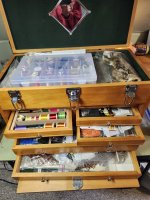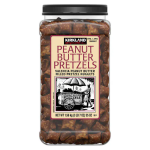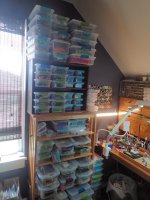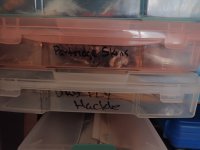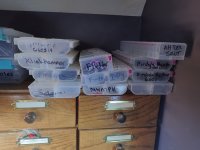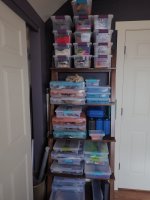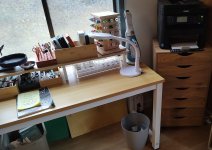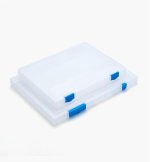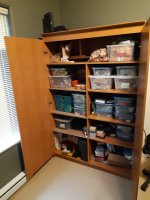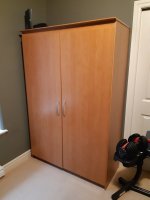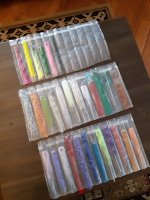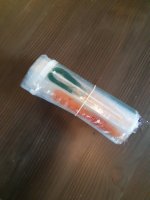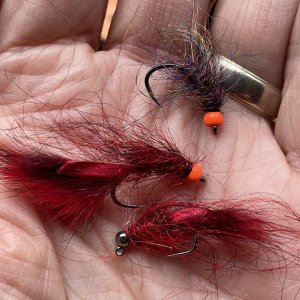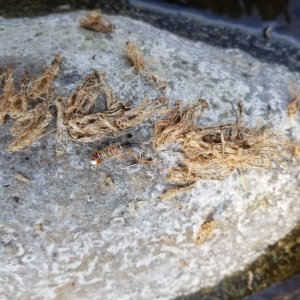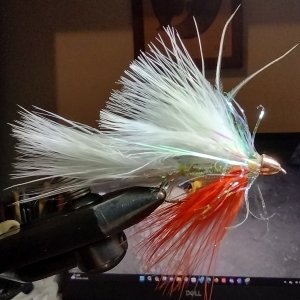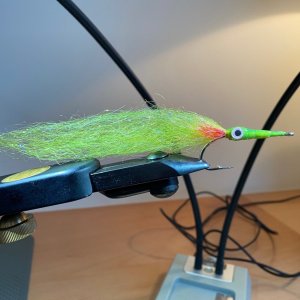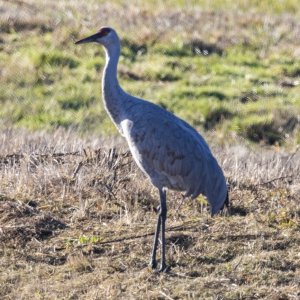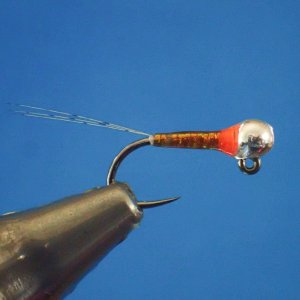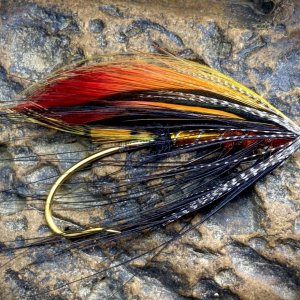Storing fly tying materials is easy when you are starting out. Most everything fits in a few containers. However as you progress tying different patterns and tying more flies you inevitably accumulate more and more materials. After 60+ years of tying, I am the consummate example of that inevitability. Although now fully retired and lucky to have a dedicated space to tie, I’ve carted my materials all over the US and world since the 1960s when I joined the USAF. I’ve never tied commercially and usually 90% of what I tie goes to friends and charity. That said, it’s a hobby that finds me tying dozens of flies every week when I am home. As such I’ve learned a few lessons over the decades. Here’s my primer on fly tying materials storage.
View attachment 112627
Assumption (more likely fact): If you continue to tie flies, you will accumulate materials overtime.
Storage strategy: As you accumulate materials, how you organize and store them is important regardless of the volume of materials you have. Although there is no magic method here, a consistent approach started as a novice tyer will pay extreme dividends as your tying volume and variety expands.
Considerations: Fly tying material storage has six important considerations that are just as important for the beginning tyer as they are for a lifetime tyer like me.
- Material Protection: Natural materials like feathers, hackle capes and saddles, skins, fur, hair, etc. are all vulnerable to mold and insects given the right climatic conditions. Nothing is more disappointing than finding an expensive hackle cape chewed up by skin beetle larva or a nice piece of fur soiled by mold. Infestations are easier to prevent if proactive actions are taken upfront. Sealed containers with some form of moth ball, camphor or aromatic cedar is a good start. All my natural materials are stored with camphor (a lesson I learned in the Philippines).
- Accessibility: As your materials volume increases questions like “where did I put that orange chenille?” become more common. The solution to this is in my view is two-fold. One is using a consistent style of appropriate CLEAR containers (albeit in different sizes as necessary) that can be easily arranged in whatever space you operate in. Two, containers should be clearly labeled with their contents. If you put chenille and yarn in the same container, make it is clearly labeled on both ends as such. Whenever possible, the materials you use the most should be stored closest to your tying bench.
- New Materials: Inevitably you will obtain a new type of material that you haven’t used before. Resist the temptation to store it in the same container with some dissimilar material. Start a new labeled container whenever practical to sustain your materials organization approach. For example: I store “Flat eyes” in a different container than “dome eyes”.
- Replenishment: It is hard to believe but eventually you will consume an entire package of some important material and need to acquire more. Additionally trips to the fly shop or online retailer shouldn’t be wasted. Sales, specials, etc., need to be taken advantage of. One of the benefits of having discrete containers for different materials is that you can quickly assess whether or not you are running low on a particular material or color you use regularly. If you only have a few strands of black Krystal Flash left add it to your list before visiting the fly shop.
- Duplicates: One of the consequences of visiting your local fly shop or online retailer is the probability that you will eventually have (intentional or not) packages of unopened duplicate materials. I have a few containers labeled duplicates to store these until needed instead of putting them in with the primary supply. This usually prevents having multiple pieces of half-used materials all of the same kind. Whenever I run out of a particular material, I check the duplicates containers first to see if I’ve already got a new one on hand.
- Expansion: One of the realities of acquiring new materials is that eventually containers will fill up. When that happens it is a good time to think if any reorganization is appropriate. Well over ten years ago, I started doing a lot of tying with Moose mane and Moose body hair dyed in all sorts of colors. When one container filled, I separated the Moose hair into Light Colors and Dark Colors putting each group into a separate by similar containers each labeled appropriately.
These are just some of my ideas about fly tying materials storage. As you can see from the images some sort of system is needed if you are to survive this great hobby for a lifetime.

